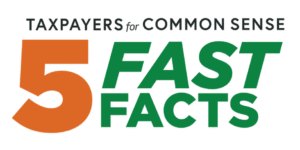 about
about
Rising Interest Rates and Debt
1. INTEREST RATES HAVE BEEN VOLATILE IN THE LAST 20 YEARS
Interest rates in the United States have been on a wild ride for over two decades. At the start of the millennium, they surged to 8.05% but never sustained a yearly average above 7% for the rest of the 2000s. Fast forward to 2020, when the Covid-19 pandemic hit, and we saw the Federal Reserve take emergency measures, pushing mortgage rates to a historic low of 2.65% by January 2021.
However, the trends have shifted dramatically since then. Today, mortgage rates and Treasury Note interest rates have climbed to the highest in years, and the Federal Reserve’s policy rate has soared to between 5.25% and 5.5%.
2. THE INTEREST RATE HAS AN ENORMOUS IMPACT ON THE COST OF SERVICING THE FEDERAL DEBT
The United States has a staggering federal debt of over $33 trillion, larger than its GDP. When interest rates were low, this debt was relatively cheap to finance. However, the Congressional Budget Office (CBO) has projected that the annual net interest costs on just the debt held by the public ($26 trillion) could reach $663 billion by the end of 2023, nearly doubling to $1.4 trillion by 2033 if current trends continue.
Even marginal upticks in interest rates can have outsized impacts over time. If average interest rates on the federal debt increase by just 0.05 percentage points more than what is currently expected, our debt could escalate to 231% of GDP by 2053, a catastrophic 50 percentage points higher than baseline CBO projections.
3. RISING DEBT AND VOLATILE INTEREST RATES AFFECT INVESTOR AND CONSUMER CONFIDENCE
In an environment of rising interest rates, investor confidence in U.S. fiscal responsibility wanes. The result? An increasingly expensive debt burden and even higher interest rates—a vicious cycle we can’t afford. Investors, who may have previously turned a blind eye to deficits when inflation was low, are now wary of the ballooning U.S. federal debt. See the recent downgrade of the U.S. credit rating.
4. INTEREST PAYMENTS ON THE FEDERAL DEBT ARE THE FASTEST GROWING SEGMENT OF THE FEDERAL BUDGET
The interest payments on federal debt are growing rapidly. In fiscal year 2022 interest payments were nearly $475 billion in 2022 ballooning to $659 billion in 2023. Interest payments could grow to a staggering $1.4 trillion by 2032. Such an explosion in interest payments would crowd out other essential government services like healthcare, education, and infrastructure, compromising the government’s ability to meet basic needs.
5. RISING INTEREST RATES AND DEBT CREATE THE POTENTIAL FOR A FISCAL CRISIS
While the U.S. has often acted as the world’s financial safety net during times of crisis, our capacity to continue doing so is under threat. Escalating deficit spending, paired with spiraling interest rates, could severely hamper the U.S.’s ability to serve as a financial backstop in future crises.











Get Social